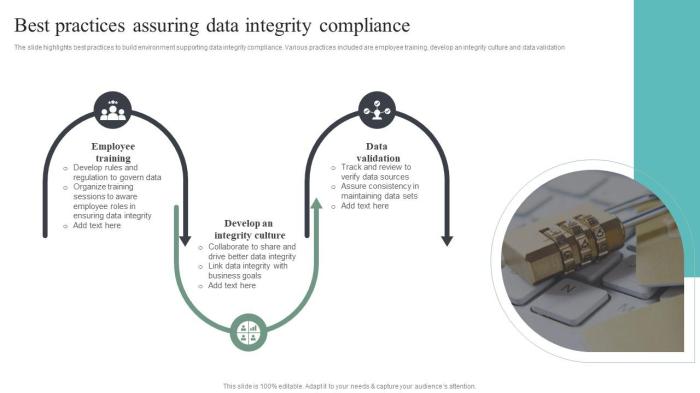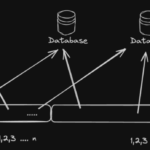Best ways to ensure data integrity in relational databases is essential for maintaining trust and reliability in an increasingly data-driven world. Data integrity ensures that the information stored in databases is accurate, consistent, and protected from unauthorized alterations. Without it, organizations face severe consequences, including financial loss, legal issues, and damage to their reputation. Thus, understanding the key components and techniques for ensuring data integrity becomes crucial for any database professional.
This guide will delve into the importance of data integrity, discussing common scenarios where it is critical and exploring various techniques such as implementing primary and foreign keys, applying constraints, and the role of transactions. Additionally, we will cover essential practices for data validation and sanitization, methods for regular auditing and monitoring, and the significance of robust backup and recovery strategies to safeguard your data.
Importance of Data Integrity

Data integrity is a foundational principle in the design and operation of relational databases. It refers to the accuracy, consistency, and reliability of data stored in a database. Maintaining data integrity ensures that the data remains valid and is protected against corruption, unauthorized access, and unintended changes. Compromised data integrity can lead to significant repercussions for businesses and organizations. When data is inaccurate or inconsistent, it can result in poor decision-making, financial losses, and damage to an organization’s reputation.
Furthermore, when customer data is involved, the loss of integrity can lead to breaches of privacy and trust, which can be difficult to recover from.
Common Scenarios Where Data Integrity Is Critical
Several situations highlight the importance of maintaining data integrity in relational databases. These scenarios illustrate the potential risks and the need for robust integrity measures.
- Financial Transactions: In banking systems, data integrity ensures that transactions are recorded accurately, preventing fraud and errors in account balances.
- Healthcare Records: Patient information must be accurate and consistent to ensure proper treatment and care, as well as compliance with regulations like HIPAA.
- E-commerce Systems: Accurate inventory management relies on data integrity to prevent overselling and to maintain customer satisfaction.
- Supply Chain Management: Ensuring the integrity of data across the supply chain is crucial for tracking products and managing logistics efficiently.
A reliable system for assuring data integrity can prevent these negative outcomes, ensuring seamless operations and maintaining trust with stakeholders.
“Data integrity is not just a technical requirement; it is a business imperative.”
In summary, data integrity plays a vital role in various sectors, underpinning the functionality and reliability of relational databases. By implementing robust practices and safeguards, organizations can protect themselves from the dire consequences of data integrity breaches.
Techniques for Ensuring Data Integrity
Ensuring data integrity in relational databases is paramount for maintaining accurate and reliable information. Various techniques can be employed to safeguard data at multiple levels, ensuring that any distortions or inaccuracies are prevented during data handling. This segment delves into essential methods, including the implementation of keys, constraints, and the role of transactions.
Implementation of Primary and Foreign Keys
Primary keys and foreign keys are fundamental components in relational database design that enforce data integrity. A primary key uniquely identifies each record in a table, ensuring that no duplicate entries exist. This guarantees that every record can be accessed and referenced accurately. Foreign keys, on the other hand, establish a relationship between different tables, creating a link that enforces referential integrity.
Migrating data between different database systems can be a complex task, but understanding the process is crucial for seamless transitions. Proper guidance on how to migrate data between different database systems can help ensure data integrity and reduce downtime, making the entire migration smoother. By leveraging the right tools and techniques, organizations can avoid common pitfalls and achieve better results.
When a foreign key in one table points to a primary key in another, it ensures that relationships between data are valid and that there are no orphan records. For example, in a database containing customer and orders tables, a foreign key in the orders table may reference the primary key of the customer table, ensuring that each order is associated with a valid customer.
Primary keys provide uniqueness, while foreign keys maintain relationships between tables, both critical for data integrity.
Overview of Constraints, Best ways to ensure data integrity in relational databases
Constraints are rules applied to database columns that help enforce data integrity at various levels. Key types of constraints include:
- Unique Constraint: Ensures that all values in a column are distinct, preventing duplicate entries.
- Check Constraint: Validates that values in a column meet specific conditions, such as value ranges.
- Not Null Constraint: Guarantees that a column cannot have null values, ensuring essential data is always present.
Implementing these constraints is crucial for maintaining the quality and reliability of data. They serve as safeguards against improper data entry and help preserve the accuracy of the database.
Ensuring the safety of your data is paramount, which is why knowing the best practices for database backup and recovery processes is essential. Implementing regular backups and having a solid recovery plan can protect your data from unexpected events, such as system failures or cyber threats. A proactive approach not only safeguards your information but also enhances your organization’s resilience.
Role of Transactions and ACID Properties
Transactions play a pivotal role in maintaining data integrity through the application of ACID properties: Atomicity, Consistency, Isolation, and Durability. These properties ensure that database transactions are processed reliably.
- Atomicity: Guarantees that a transaction is all-or-nothing, meaning that if any part of the transaction fails, the entire transaction is rolled back to maintain data integrity.
- Consistency: Ensures that a transaction brings the database from one valid state to another, adhering to all predefined rules and constraints.
- Isolation: Allows concurrent transactions to occur without interference, ensuring that transactions do not affect each other’s execution.
- Durability: Guarantees that once a transaction has been committed, it will remain so, even in the event of a system failure.
By adhering to these properties, databases can maintain a high level of integrity, ensuring that data remains consistent and accurate throughout various operations.
Data Validation and Sanitization
Data validation and sanitization are critical processes in ensuring the integrity and security of databases. These practices help maintain the quality of data and protect against various vulnerabilities, notably injection attacks that can compromise system security. Implementing effective validation techniques can significantly reduce the risk of erroneous or malicious data being processed.Data validation involves checking the accuracy and quality of data before it is entered into the database.
This includes ensuring that the data conforms to the expected format, type, and constraints defined for each field. By validating input data, organizations can prevent corrupted data from entering their systems, which is essential for maintaining data quality and reliability.
Best Practices for Validating Input Data
Implementing robust validation rules is essential for safeguarding databases. Effective validation practices ensure that inputs fall within acceptable parameters before any processing occurs. Below are key strategies for input validation:
- Type Checking: Ensure the data type of the input matches the expected type (e.g., strings, integers, dates). This validation prevents incorrect data types from being processed.
- Format Validation: Use regular expressions to check that data adheres to specific formats, such as email addresses, phone numbers, or dates. For example, a date should match the format YYYY-MM-DD.
- Range Checking: For numerical inputs, validate that values fall within a defined range. For instance, an age field should allow only integers between 0 and 120.
- Required Fields: Ensure that mandatory fields are not left blank. This can prevent incomplete records from being entered into the database.
Techniques for Data Sanitization
Data sanitization is vital for preventing injection attacks, particularly SQL injection, which can lead to unauthorized access and data breaches. Sanitization techniques help neutralize potentially harmful input before it is processed. The following practices enhance data security:
- Parameterized Queries: Use prepared statements with placeholders instead of concatenating SQL queries. This method separates code from data, mitigating the risk of injection attacks.
- Escaping Input: Escape special characters in user inputs to ensure that they are treated as literal values. This is particularly important for SQL commands where characters like quotes could alter command functionality.
- Sanitization Libraries: Utilize libraries and frameworks that provide built-in sanitization functions. These tools can streamline the sanitization process and ensure best practices are consistently applied.
- Content Security Policy (CSP): Employ CSP headers to define which resources can be loaded, significantly reducing the risk of cross-site scripting (XSS) attacks.
Validation Rules for Different Data Types
It is essential to establish specific validation rules tailored to different data types to ensure data integrity. Here are examples of validation rules categorized by data type:
| Data Type | Validation Rule |
|---|---|
| String | Must not exceed a defined length (e.g., 255 characters) and should not contain prohibited characters (e.g., ‘<', '>‘, ‘;’). |
| Integer | Must be within a specified range (e.g., 0-100) and must be a whole number without decimal points. |
| Date | Must match the format YYYY-MM-DD and represent a valid date (e.g., not February 30). |
“Effective data validation and sanitization are the first lines of defense against data corruption and security breaches.”
Regular Auditing and Monitoring
Regular auditing and monitoring of database records are essential practices for maintaining data integrity in relational databases. These processes not only help in identifying discrepancies and potential threats but also ensure compliance with regulatory standards. A robust audit plan can serve as a preventive measure, reducing the risk of data corruption and loss while enhancing overall database performance.Monitoring database transactions is a proactive approach that aids in the detection of anomalies in real-time.
By observing transaction patterns and access behaviors, organizations can quickly spot irregularities that may indicate security breaches or unintended data modifications. This vigilance allows for immediate remediation actions, safeguarding the integrity and reliability of the database.
Designing a Plan for Regular Audits
Creating a comprehensive auditing plan is vital for identifying integrity issues within database records. The plan should encompass several key components:
1. Audit Frequency
Determine how often audits will be conducted (e.g., monthly, quarterly).
2. Scope of Audits
Identify which database records will be targeted, including sensitive information and transactions.
3. Audit Procedures
Establish clear procedures for conducting the audits, covering aspects like data comparisons, checksum validations, and integrity checks.
4. Reporting Mechanisms
Define how findings will be documented and reported, including metrics for measuring data integrity.
Monitoring Database Transactions
Monitoring database transactions involves tracking and analyzing interactions with the database to ensure data integrity. Effective monitoring can help organizations achieve the following:
Real-time Anomaly Detection
By setting up alerts for unusual transaction patterns, administrators can respond rapidly to potential security breaches.
Performance Assessment
Continuous monitoring can reveal performance bottlenecks, allowing for timely optimization.
Compliance Verification
Monitoring ensures that all database actions comply with internal policies and regulatory requirements.
Checklist for Effective Database Monitoring Practices
Implementing effective database monitoring requires a structured approach. Below is a checklist to aid organizations in establishing robust monitoring practices:
Establish Baseline Performance Metrics
Document normal transaction patterns and system performance levels.
Set Up Alerts for Anomalies
Configure alerts for unusual activities, such as sudden spikes in data access or modifications.
Regularly Review Access Logs
Schedule reviews of user access logs to detect unauthorized database access.
Implement Change Tracking
Utilize features that track changes to database records for accountability.
Perform Regular Backups
Ensure that data backups are performed regularly to maintain data integrity in case of failure.
Conduct Vulnerability Assessments
Periodically review the database environment for potential security vulnerabilities.
“Regular auditing and proactive monitoring are critical components in the strategy to maintain data integrity and security within relational databases.”
Backup and Recovery Strategies: Best Ways To Ensure Data Integrity In Relational Databases

Regular backups are a crucial aspect of maintaining data integrity in relational databases. They serve as a safety net against data loss due to various factors such as hardware failures, software bugs, cyber-attacks, or natural disasters. Establishing a robust backup and recovery strategy ensures that data can be restored quickly and effectively, minimizing downtime and preserving the accuracy and reliability of the information.Different backup methods provide flexibility in how data is secured, each catering to specific needs and situations.
Understanding the significance of each method is essential for implementing an effective backup strategy.
Backup Methods
Each backup method serves unique purposes and is chosen based on the organization’s specific data protection needs. Here are the primary types of backups:
- Full Backup: A complete copy of the entire database, including all data and system files. This method provides a comprehensive data safeguard but can be time-consuming and storage-intensive. Ideal for periodic backups where a complete dataset is necessary.
- Incremental Backup: This method captures only the data that has changed since the last backup, whether it was a full or incremental one. It is efficient in terms of storage and time but requires all previous backups to restore the complete dataset. Suitable for frequent backups to minimize data loss.
- Differential Backup: This backup type saves all changes made since the last full backup. It balances the storage and recovery time, as restoring from a differential backup requires the last full backup and the most recent differential backup. This method strikes a balance between speed and efficiency, making it a popular choice for businesses.
Incorporating a diverse backup strategy ensures that data is not only secure but also readily available for restoration when needed.
Recovery Plan Template
A well-defined recovery plan is essential for restoring data integrity after a failure. Below is a template outlining the steps necessary to recover a relational database:
Recovery Steps: A solid recovery plan is critical to minimize downtime and maintain data integrity.
- Assess Damage: Immediately evaluate the extent of the data loss or corruption to determine the necessary recovery steps.
- Identify Backup Version: Locate the most recent and reliable backup that can be used for restoration.
- Prepare the Environment: Ensure that the database environment is set up correctly, including any necessary configurations and dependencies.
- Restore Data: Use the selected backup method to restore the database to its previous state, ensuring that all components are intact.
- Verify Integrity: Conduct data validation tests to ensure that the restored data is accurate and consistent.
- Document the Incident: Record the details of the failure, recovery process, and any lessons learned to improve future practices.
Implementing this recovery plan will help ensure that data integrity is maintained, even in the face of unforeseen challenges. It not only safeguards the data but also enhances the organization’s resilience against future disruptions.


